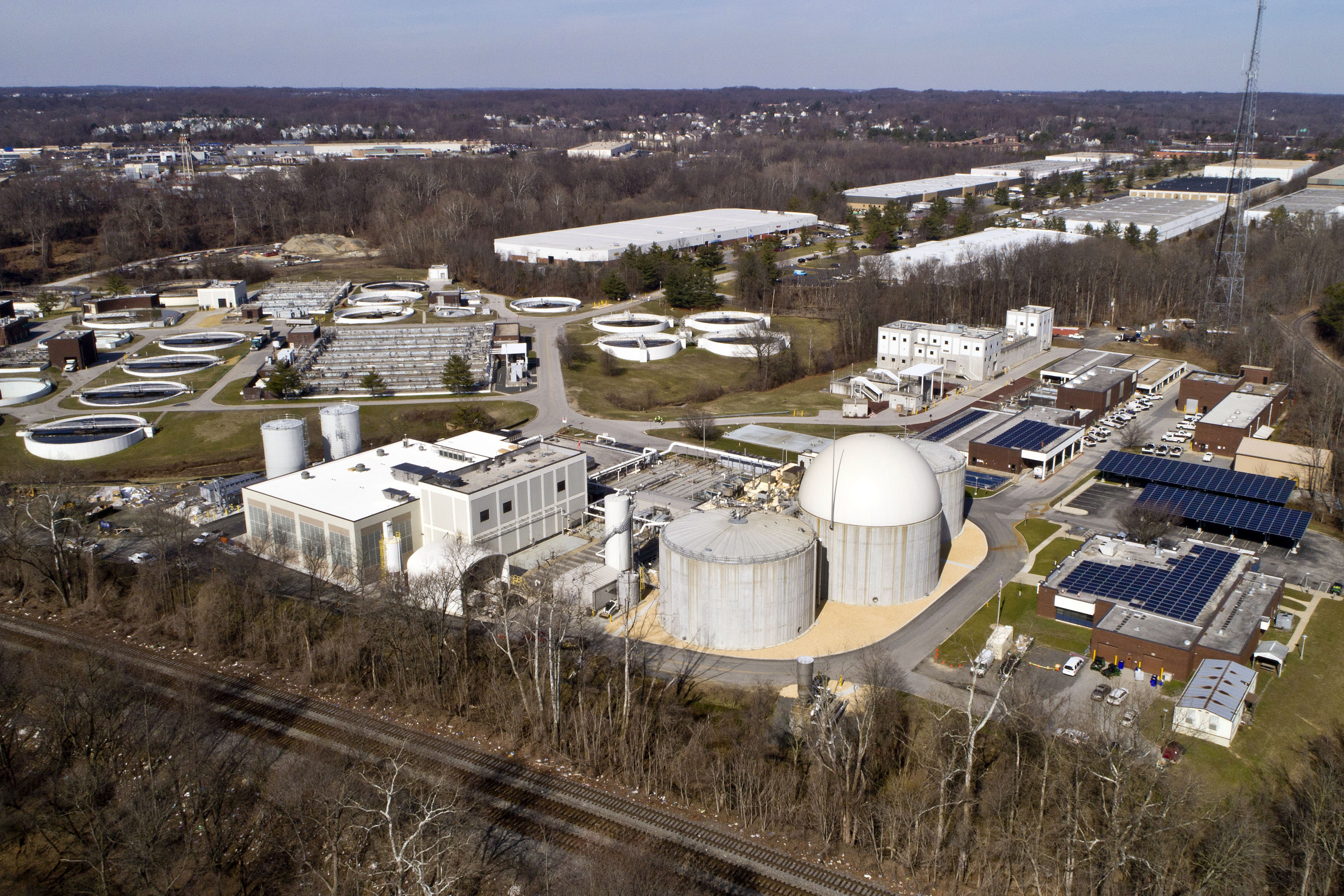
Little Patuxent Water Reclamation Plant Biosolids Processing Facilities Improvement Project
Earns an Envision Silver Award for Sustainable Infrastructure
The Institute for Sustainable Infrastructure is proud to announce that Howard County’s Biosolids Processing Facility Improvements Project has earned an Envision Silver award for sustainability.
Why was the Project Necessary?
Howard County is upgrading the Little Patuxent Water Reclamation plant’s biosolids processing facilities to adhere to recommendations included in the County’s 2013 Biosolids Master Plan study, which calls for replacing the current biosolids stabilization practice, consisting of advanced lime stabilization of undigested primary and waste activated solids with anaerobic digestion and direct heat drying to meet very high standards for pollutants, pathogens, and vector attraction reduction. While both biosolids stabilization practices produce Class A municipal biosolids, anaerobic digestion and direct heat-drying produce a more versatile biosolids product suitable for selling directly to citizens for use. Anaerobic digestion may also be used for soil blending and fertilizer blending. (Under Maryland regulations, the use of Class A biosolids produced by the advanced lime stabilization process is limited to bulk agricultural land applications.)
Envision was employed to benefit the community, demonstrate accountability throughout the project, and achieve key sustainability goals.
Howard County, HDR, and Clark Construction collaborated on this project.
The Little Patuxent Water Reclamation Plant (LPWRP) serves more than fifty percent of the population in the central part of Howard County, Maryland, including Columbia, Savage, and North Laurel. Over 800 miles of gravity and force main sewer pipes carry wastewater from these towns to the LPWRP for treatment.
This project added a side stream centrate deammonification process into the existing anaerobic pretreatment process tanks. It also incorporated phosphorus precipitation systems to improve the removal of phosphorus from the wastewater.
This project also addresses several community needs and issues, including:
– ensuring the long-term viability and cost-effectiveness of the County’s biosolids management practices
– adhering to newer and stricter biosolids regulations
– addressing possible odor issues that can arise from wastewater treatment processes.
KEY SUSTAINABILITY ACHIEVEMENTS
– Stimulating sustainable growth and development. This project implements new process methods into the overall wastewater solids treatment process. The new systems create jobs and increase local productivity throughout the project’s life. According to a research report from the Bureau of Business Research at the University of Nebraska, for every $one million in wastewater infrastructure spending, 11.6 jobs are created. For this $93.5 million project, more than 1,000 jobs (direct, indirect, and induced jobs) in multiple sectors throughout the service area are expected to be created. Furthermore, the project improves the quality of the wastewater and solids treatment, thereby improving community livability, productivity, and employment opportunities. It will also attract new businesses and industries.
– Finding beneficial uses for waste products. A detailed biosolids market study was conducted by Material Matters, Inc., a consultant hired by the project team to research potential end uses for the new Class A dried biosolids waste product. The study entailed evaluating other drying facilities in different states; reaching out to over 15 potential customers in three different markets to understand the chemical and physical characteristics preferred or required by each. They also developed a product utilization sheet to advertise the uses of the biosolids—marketed as thermally dried exceptional quality biosolids—from the LPWRP. They can be used as soil blenders, fertilizer blenders, and sod/turf production, making them much more versatile than the biosolids produced by the prior lime stabilization process at the plant. This will, in turn, improve the long-term viability of the County’s biosolids management practices.
– Use of recycled and regionally sourced materials. From the earliest planning stages through construction, the project team prioritized the use of recycled and regionally sourced materials and minimized the amount of material sent to landfills:
– The project uses over 50 percent recycled materials by weight. Recycled materials used include steel, concrete, bricks, and dumpster material (i.e., material recovered from the dumpster for use on the project rather than going to landfill). In addition, where possible, existing facilities, infrastructure, and equipment were repurposed and incorporated into the project.
– At least 90 percent of the materials used on the project (by cost) are considered local or regionally sourced (e.g., the aggregate came from suppliers within a 50-mile radius, and the concrete came from suppliers within a 100-mile radius).
– Reducing excavated materials taken off-site. More than 80 percent of the materials excavated for this project were kept onsite in stockpiles with the intent to reuse for topsoil and fill.
SOUNDBITES
Art Shapiro, Bureau Chief: “In 2012, the Howard County Bureau of Utilities began planning for improved Biosolids Facilities at our Little Patuxent Water Reclamation Plant. We decided early in the planning process that we would not only rehabilitate the treatment processes for improved function and performance, but we would construct it in a socially and environmentally conscious way. Water reclamation is at its core environmental stewardship, but we were determined to raise the bar and build a facility in the most responsible manner and with sustainability in mind. We believe we have accomplished our goals and are proud that ISI has recognized our efforts with a silver award.”
Robert Hindt, Plant Manager: “Participating in this project has truly been a pleasure thanks to the collaboration of HDR Engineering as designer and Clark Construction as Construction Manager at Risk. The Little Patuxent Water Reclamation Plant has been a leader in our industry and region with the highest levels of treatment performance, especially as it pertains to nutrients in discharged effluent water. The improved biosolids product we are now producing is another example of our ability to produce a high-quality product that can be beneficially reused in various markets and minimize impacts to the Chesapeake Bay watershed and the environment in general. We are very pleased that ISI has awarded this project a silver award and appreciate all of the efforts put forth by the entire design and construction teams.”
Melissa Peneycad, ISI’s Managing Director: “The project team wanted to demonstrate their commitment to sustainability and resilience, which is why they used Envision on this project. And there’s no doubt they prioritized the needs of the community. They concentrated on repurposing and reusing materials, cutting pollutants and pathogens, and creating jobs, among other important benefits. As a result, all parties involved deserve recognition for attaining this Envision Silver award.”
Project Details At-a-Glance
Envision-Verified Project: Little Patuxent Water Reclamation Plant Biosolids Processing Facilities Improvements
Location: Savage, Maryland
Lead Envision Firm: HDR, in collaboration with Howard County and Clark Construction
Envision Rating: Silver
Award Date: September 28, 2021
Project Owner: Howard County
Project Phase: Under construction
Project Delivery Model: Construction Manager at Risk (CMAR)
Please visit the project website (https://www.howardcountymd.gov/public-works/lpwrp-biosolids- project) or contact Josh Gliptis (jgliptis@howardcountymd.gov)
Download the Project Profile announcement



